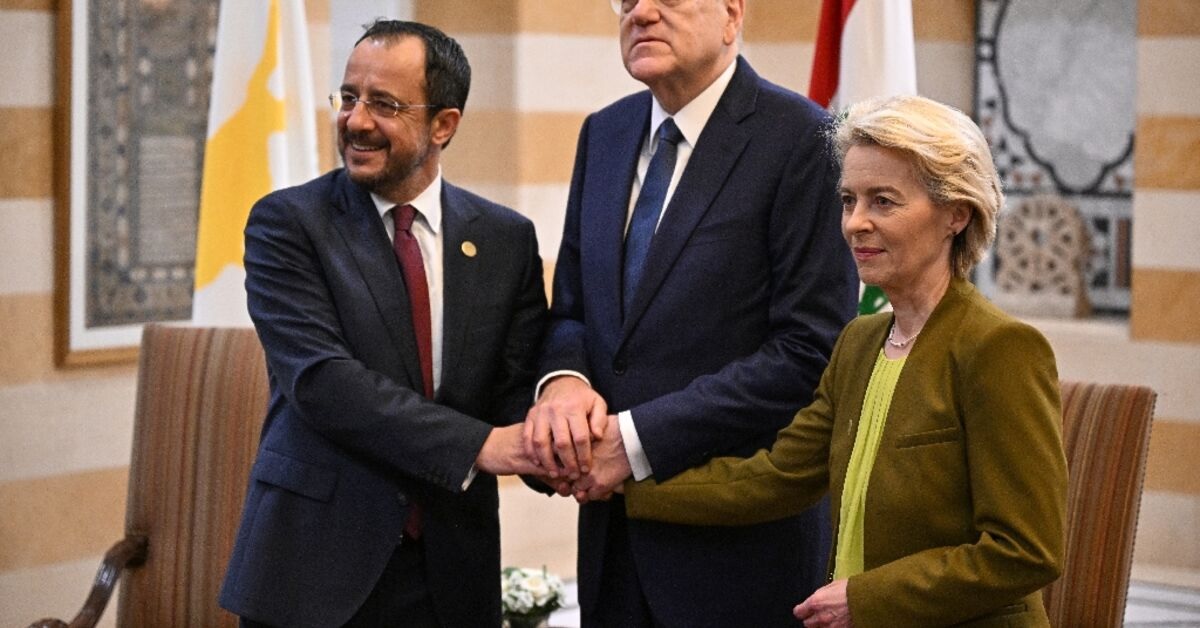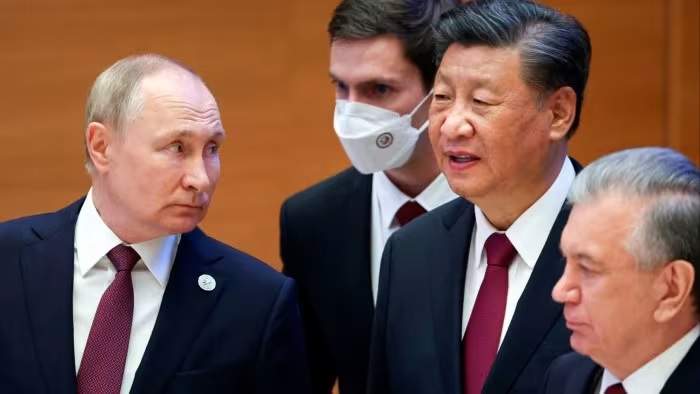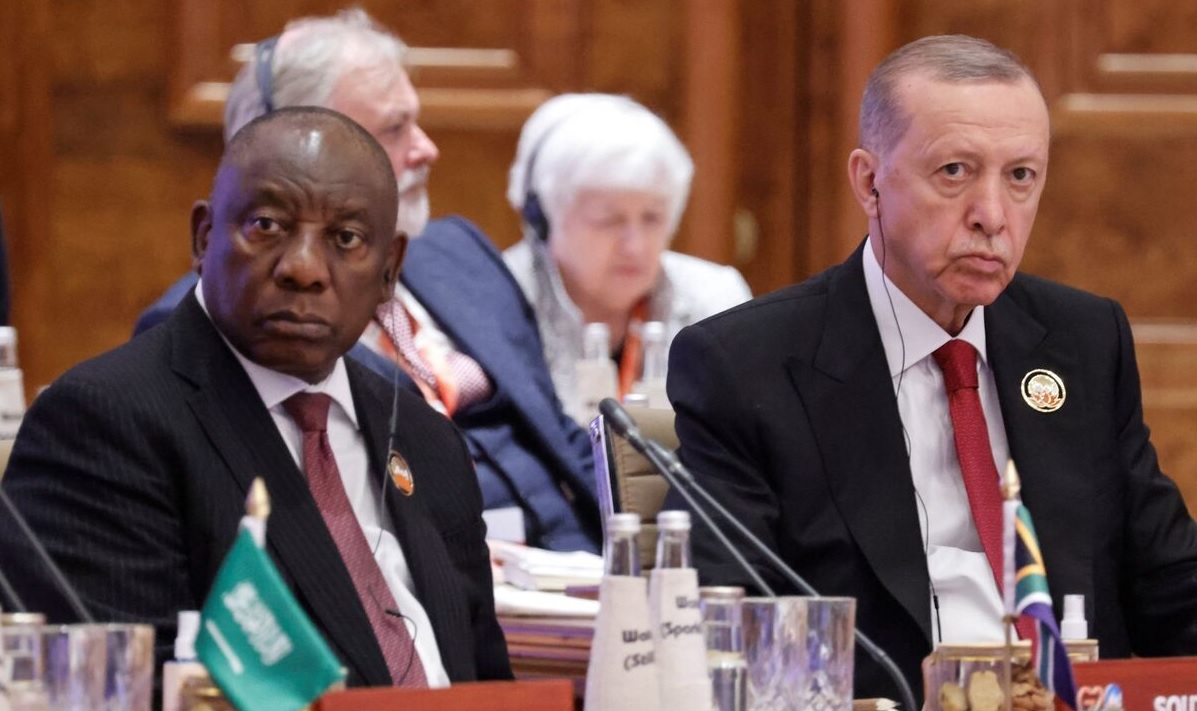World
Europe ,Lebanon The European Union pledges $1 billion aid to Lebanon to bolster basic services and address economic instability, urging cooperation on managing migration.EU chief Ursula von der Leyen on Thursday announced $1 billion in aid for Lebanon during a visit to the crisis-hit country and urged it to tackle illegal migration to the bloc.The European Union has already agreed deals with Tunisia, Mauritania and other countries to stem flows of irregular migrants."I can announce a financial package of $1 billion for Lebanon that would be available from this year until 2027," von der Leyen said, adding that "we want to contribute to Lebanon's socio-economic stability".The European Commission president said the aid was designed to strengthen basic services such as education and health in the country mired in a severe economic crisis.She called for the adoption of reforms, saying: "Lebanon needs a positive economic momentum to give opportunities to its businesses and citizens."Von der Leyen said the EU was committed to maintaining "legal pathways open to Europe" and resettling refugees to the bloc, but added that "at the same time, we count on your good cooperation to prevent illegal migration and combat migrant smuggling".Lebanon's economy collapsed in late 2019, turning the country into a launchpad for migrants, with Lebanese joining Syrians and Palestinian refugees making perilous voyages bound for Europe.The authorities in Beirut say Lebanon currently hosts around two million people from neighbouring, war-torn Syria -- the world's highest number of refugees per capita -- with almost 785,000 registered with the United Nations."We understand the challenges that Lebanon faces with hosting Syrian refugees and other displaced persons," said von der Leyen, adding the EU had supported Lebanon with 2.6 billion euros to host those people.War Refugees The war in Syria that erupted in 2011 after the government repressed peaceful pro-democracy protests has killed more than half a million people and displaced around half of the pre-war population.Lebanon has also faced nearly seven months of border clashes between its powerful, Iran-backed Shiite movement Hezbollah and Israel that flared the day after the Israel-Hamas war broke out in the Gaza Strip.The eastern Mediterranean country remains essentially leaderless, without a president and headed by a caretaker government with limited powers amid deadlock between entrenched political barons.Von der Leyen was accompanied by Cypriot President Nikos Christodoulides, who is on his second visit to Lebanon in less than a month.Cyprus, the EU's easternmost member, located less than 200 kilometres (125 miles) from Lebanon and Syria, wants to curb migrant boat departures from Lebanon towards it shores.It says the Israel-Hamas war has weakened Beirut's efforts to monitor its territorial waters.Some Lebanese politicians have blamed Syrians for their country's worsening troubles, and pressure often mounts ahead of an annual conference on Syria held in Brussels, with a ministerial meeting set for May 27.
Read More → Posted on 2024-05-02 15:57:27World
Russia ,China ,U.S The U.S. urges China and Russia to confirm human control over nuclear weapons, emphasizing responsible behavior amidst discussions on AI's role in military decision-making.A senior U.S. official recently emphasized the importance of ensuring that decisions regarding the deployment of nuclear weapons are solely in human hands, not controlled by artificial intelligence (AI). Paul Dean, a State Department arms control official, underscored the significance of this commitment during an online briefing. He highlighted that the United States, along with France and Britain, has firmly pledged that humans maintain total control over nuclear weapons.Dean called upon China and Russia to follow suit and make similar declarations. He stressed that such a commitment to human control over nuclear weapons is essential for responsible behavior and global security. His remarks were directed towards the five permanent members of the United Nations Security Council, commonly referred to as the P5.The call for human control over nuclear weapons comes at a time when the Biden administration is engaging in discussions with China on nuclear weapons policy and the development of artificial intelligence. These talks have become increasingly important as advancements in AI technology raise concerns about its potential role in military decision-making.While the Chinese defense ministry did not immediately respond to Dean's request for comment, discussions between U.S. Secretary of State Antony Blinken and China’s Foreign Minister Wang Yi in Beijing on April 26 shed light on the growing importance of addressing AI-related issues. Blinken announced plans for the first bilateral talks between the U.S. and China on artificial intelligence, emphasizing the need to manage risks and ensure safety surrounding the technology.Although U.S. and Chinese officials have resumed discussions on nuclear weapons as part of efforts to improve military communication, formal arms control negotiations are not anticipated in the near future. China, which is expanding its nuclear capabilities, previously proposed that the largest nuclear powers negotiate a no-first-use treaty among themselves.In summary, the U.S. is urging China and Russia, along with other nuclear powers, to reaffirm the principle that decisions regarding nuclear weapons must be made by humans, not artificial intelligence. These efforts underscore the importance of responsible behavior and collaboration in addressing emerging challenges in nuclear weapons policy and AI development.
Read More → Posted on 2024-05-02 15:54:26World
Russia Ukraine Conflict The US accuses Russia of violating the Chemical Weapons Convention by using chloropicrin and tear gas in Ukraine, imposing sanctions to cripple Moscow's military capabilities and support for President Putin's invasion. These actions reflect international efforts to hold Russia accountable and bolster Ukraine's defense amid escalating tensions.In recent developments concerning the conflict in Ukraine, the United States has taken a firm stance against Russia, accusing it of violating the Chemical Weapons Convention (CWC) by deploying chemical agents against Ukrainian forces. The US State Department's assertion, coupled with the announcement of new sanctions targeting entities supporting Russia's military endeavors, underscores the gravity of the situation.According to the State Department, Russia purportedly utilized chloropicrin, classified both as a warfare agent and a pesticide, alongside riot control agents, including tear gas, in its military operations in Ukraine. Such actions, deemed violations of the CWC, raise concerns about the humanitarian impact and the use of chemical weapons in warfare.The State Department's allegations suggest a strategic intent by Russian forces to gain tactical advantages on the battlefield, potentially at the expense of international norms and agreements. The use of chemical agents represents a troubling escalation in the conflict, further complicating efforts towards a peaceful resolution.In response to these accusations, the US Treasury Department announced extensive sanctions aimed at crippling Russia's military and industrial capabilities. These measures target nearly 300 entities across various countries, including Russia and China, suspected of aiding President Vladimir Putin's invasion of Ukraine.The sanctions aim to impede the acquisition of weapons and technology by Moscow for its military operations in Ukraine. Additionally, they target Russian government entities and companies involved in chemical and biological weapons programs, reflecting international pressure for transparency and accountability.Treasury Secretary Janet Yellen emphasized the significance of these actions in disrupting Russia's war efforts and providing support to Ukraine. The sanctions, alongside recent legislative measures providing funding and assistance to Kyiv's military, demonstrate the United States' commitment to bolstering Ukraine's defense capabilities.The blacklisting of individuals and companies involved in Russia's energy, mining, and metals sectors further underscores the breadth of measures aimed at exerting pressure on Moscow. Additionally, the sanctions extend to individuals connected to the death of Russian opposition leader Aleksey Navalny, highlighting broader concerns regarding human rights and political repression in Russia.The targets of the sanctions include actors facilitating Russia's acquisition of critical technology and equipment from abroad, with some entities based in countries such as China facing increased scrutiny for their support of Russia during the conflict. The Treasury Department's actions underscore the international community's resolve to hold accountable those enabling Russia's aggression in Ukraine.Beyond immediate military considerations, the imposition of sanctions reflects a broader commitment to upholding international norms and deterring the use of chemical weapons in conflicts. By targeting entities facilitating Russia's military capabilities, the United States seeks to undermine Moscow's ability to sustain its aggression in Ukraine and promote stability in the region.In conclusion, the US accusations against Russia for its alleged use of chemical weapons in Ukraine, accompanied by the imposition of fresh sanctions, highlight the ongoing tensions and complexities surrounding the conflict. The measures underscore the commitment of the United States and its allies to support Ukraine's defense and uphold international norms in the face of aggression and humanitarian concerns.
Read More → Posted on 2024-05-02 15:34:32World
Israel The Brazilian Army selects Israeli ATMOS howitzer for its VBCOAP 155mm SR program, aiming to modernize its artillery capabilities, with 36 units planned for acquisition.The Brazilian Army's Logistics Command has made a significant decision in its pursuit of modernizing its artillery capabilities. After a thorough evaluation process, the winning bid for the self-propelled 155mm howitzers, under the VBCOAP 155mm SR program, has been announced.The selected artillery system is the Israeli ATMOS, offered by Elbit Systems Land. This system will be mounted on Czech Tatra T815 6x6 trucks, fulfilling the requirements outlined by the Exército Brasileiro.Competing against several other bids, the Israeli ATMOS stood out for its adherence to the specified criteria. It surpassed contenders such as the Slovakian Zuzana 2 from Excalibur International, the French CAESAR from KNDS France, and the Chinese SH15 from Norinco.The VBCOAP 155mm SR program aims to acquire 36 artillery systems for the Brazilian Army. The initial step involves signing a contract for the first two howitzers on May 7th. These units will undergo technical and operational evaluations and are expected to be delivered within 12 months of contract signing.Upon successful completion of trials, the remaining 34 systems will be ordered and delivered progressively by 2034.This selection marks a significant milestone in the Brazilian Army's efforts to modernize its artillery capabilities, ensuring readiness and effectiveness in defense operations.
Read More → Posted on 2024-05-02 15:26:36India
India , Norway India and Norway extend their partnership through the Norway India Partnership Initiative (NIPI) to enhance maternal and child health care, aiming to reduce mortality rates and share successful practices globally.India and Norway have reaffirmed their commitment to improving maternal and child health care through the Norway India Partnership Initiative (NIPI). The Union Health Secretary, Apurva Chandra, and Deputy Ambassador of Norway, Martine Aamdal Bottheim, recently signed documents marking the beginning of the 4th phase of this vital partnership.Since its inception in 2006, NIPI has been instrumental in supporting various Indian states, including Odisha, Bihar, Rajasthan, Madhya Pradesh, and the Union Territory of Jammu and Kashmir, in enhancing maternal and child health facilities. The initiative, aligned with India's National Health Policy 2017 and Sustainable Development Goals, focuses on crucial areas such as Maternal, Newborn, and Child Health.The third phase of NIPI, which built upon the successes of its predecessors, emphasized scaling up proven interventions in aspirational districts, fostering innovation within the public health system, and documenting and sharing best practices. This collaborative effort between the Governments of India and Norway aims to reduce maternal, newborn, and child mortality rates in targeted regions.Recognizing the efficacy of the first two phases, both governments agreed to extend the partnership further. Phase 3, formalized through a Memorandum of Understanding, expands the initiative's reach to aspirational districts and establishes an innovation hub. Moreover, it emphasizes the dissemination of successful practices globally, enhancing learning opportunities for health systems worldwide.Moving forward, the partnership will continue to innovate, improve, and scale up quality healthcare interventions at the community and facility levels. By aligning with India's National Health Policy goals, NIPI remains committed to making tangible improvements in maternal and child health outcomes, thereby contributing to the overall well-being of communities in India and beyond.
Read More → Posted on 2024-05-02 15:23:12World
Russia Russia proposes a UN resolution urging all nations to permanently prevent weapon deployment in outer space, following its veto of a US-Japan resolution aimed at halting a space arms race. Tensions rise as concerns over space weaponization escalate.Russia has circulated a U.N. resolution calling on all countries to take urgent action to prevent putting weapons in outer space "for all time" a week after it vetoed a U.S.-Japan resolution to stop an arms race in space.The Russian draft resolution, obtained Wednesday by The Associated Press, goes further than the U.S.-Japan proposal, not only calling for efforts to stop weapons from being deployed in outer space but for preventing "the threat or use of force in outer space," also "for all time."It says this should include deploying weapons "from space against Earth, and from Earth against objects in outer space."Russia's U.N. Ambassador Vassily Nebenzia told the Security Council when he vetoed the U,S.-Japan draft that it didn't go far enough in banning all types of weapons in space.The vetoed resolution focused solely on weapons of mass destruction including nuclear arms, and made no mention of other weapons in space.It would have called on all countries not to develop or deploy nuclear arms or other weapons of mass destruction in space, as banned under a 1967 international treaty that the U.S. and Russia ratified, and to agree to the need to verify compliance.Before the U.S.-Japan resolution was put to a vote on April 24, Russia and China proposed an amendment that would call on all countries, especially those with space capabilities, "to prevent for all time the placement of weapons in outer space, and the threat of use of force in outer spaces."The vote was 7 countries in favor, 7 against, and one abstention and the amendment was defeated because it failed to get the minimum 9 "yes" votes in the 15-member Security Council required for adoption.U.S. Ambassador Linda Thomas-Greenfield told the council after the vote that Russian President Vladimir Putin has said Moscow has no intention of deploying nuclear weapons in space."Today's veto begs the question: Why? Why, if you are following the rules, would you not support a resolution that reaffirms them? What could you possibly be hiding," she asked. "It's baffling. And it's a shame."Putin was responding to White House confirmation in February that Russia has obtained a "troubling" anti-satellite weapon capability, although such a weapon is not operational yet.Russia's U.N. Ambassador Vassily Nebenzia said after casting the veto that the U.S.-Japan resolution cherry picked weapons of mass destruction.He said much of the U.S. and Japan's actions become clear "if we recall that the U.S. and their allies announced some time ago plans to place weapons ... in outer space."Nebenzia also accused the U.S. of blocking a Russian-Chinese proposal since 2008 for a treaty against putting weapons in outer space.Thomas-Greenfield accused Russia of undermining global treaties to prevent the spread of nuclear weapons, irresponsibly invoking "dangerous nuclear rhetoric," walking away from several of its arms control obligations, and refusing to engage "in substantive discussions around arms control or risk reduction."Much of the Russian draft resolution is exactly the same as the U.S.-Japan draft, including the language on preventing an arms race in space.It calls on all countries, especially those with major space capabilities, "to contribute actively to the objective of the peaceful use of outer space and of the prevention of an arms race in outer space."Thomas-Greenfield said the world is just beginning to understand "the catastrophic ramifications of a nuclear explosion in space."
Read More → Posted on 2024-05-02 15:17:25World
Turkey ,Israel Turkey joins South Africa's lawsuit against Israel at the International Court of Justice over Gaza conflict allegations, while Israel prepares for potential ICC warrants for senior officials amid escalating tensions.Turkey has announced its decision to join South Africa's lawsuit against Israel in the International Court of Justice (ICJ), marking a significant development in the ongoing legal battle surrounding the Gaza conflict. Turkish Foreign Minister Hakan Fidan revealed that legal experts have been assessing Turkey's potential involvement in the case against Israel, with plans to file an application with the ICJ in the near future.The lawsuit, initiated by South Africa, alleges that Israel's military campaign in Gaza was aimed at the destruction of the Palestinian population. During mid-January hearings at the Hague, South African representatives argued their case, while Israeli officials, led by former Supreme Court president Aharon Barak, countered the claims, asserting Israel's right to self-defense and adherence to international law.Despite Israel's objections to the ICJ's jurisdiction and its insistence on its right to defend itself, a provisional ruling issued by the ICJ on January 26 instructed Israel, by a significant majority vote, to take measures to prevent genocide in Gaza. However, the ruling did not mandate an immediate ceasefire.Legal experts caution that it could take years for a final ruling on the genocide allegations against Israel. While a ruling in favor of the claim would be legally binding, enforcement could pose challenges.Meanwhile, Israeli leaders are preparing for potential warrants for the arrest of senior officials, including Prime Minister Benjamin Netanyahu, by the International Criminal Court (ICC) for alleged war crimes. The ICC's chief prosecutor, Karim Khan, is expected to make decisions regarding these warrants soon.In response to perceived threats, Israel has instructed its embassies to prepare for potential waves of anti-Semitic sentiment worldwide and urged increased security measures for Jewish institutions.In another development exacerbating tensions between Jerusalem and Ankara, Turkey authorized a flotilla departure from Istanbul aimed at breaking Israel's naval blockade of Gaza. The convoy, organized by an Islamist aid organization with ties to Hamas, faced setbacks when Guinea-Bissau withdrew its flag from two of the three ships following Israeli pressure.The developments underscore the complex dynamics surrounding the Gaza conflict and its legal ramifications, with implications for international relations and regional stability.
Read More → Posted on 2024-05-02 15:12:33India
India CRPF establishes 125 security posts in Naxal-affected regions over four years, significantly bolstering anti-insurgency efforts. Recent successes include the elimination of 29 Naxals in Chhattisgarh's largest encounter, reflecting a promising decline in LWE-related violence.In the ongoing battle against Left Wing Extremism (LWE) in India, the Central Reserve Police Force (CRPF) has taken a significant step forward by establishing a total of 125 security posts, known as forward operating bases (FOBs), over the last four years. These FOBs, strategically positioned deep within forest areas, have provided a crucial advantage to security forces in combating Naxal insurgency.The recent surge in FOB installations, with 18 set up in 2024 alone, underscores the commitment of CRPF in enhancing security measures. This proactive approach has yielded tangible results, with over 90 Naxals neutralized, more than 125 apprehended, and 150 surrendering in Chhattisgarh alone this year.The decline in LWE-related violence, as highlighted by the Ministry of Home Affairs data, reflects the effectiveness of these measures. Over the period from 2014 to 2023, incidents of LWE violence have reduced by 52%, accompanied by a 69% decrease in fatalities compared to the preceding decade.The impetus for intensified operations against Maoists came following a comprehensive security review chaired by Union Home Minister Amit Shah. Subsequent directives led to the formation of a high-powered committee comprising top officials from various security agencies, which facilitated coordinated efforts in tackling the insurgency.The recent success stories on the ground, such as the significant encounter in Kanker district resulting in the elimination of 29 Naxalites, underscore the impact of concerted actions. This marks the highest casualty inflicted on Maoists in a single encounter in the history of Chhattisgarh's anti-LWE operations.Furthermore, the expansion of essential services in Naxal-affected regions has been a crucial aspect of the government's strategy. Over 5,000 post offices, 1,298 bank branches, and 1,348 operational ATMs have been established in 90 districts with Naxal presence. Additionally, the construction of over 4,800 mobile towers and laying of approximately 9,300 kilometers of roads have significantly improved connectivity in these areas.Moreover, initiatives focusing on education and skill development, such as the establishment of Eklavya residential schools, ITIs, and skill development centers, highlight the holistic approach adopted to address the root causes of extremism.In conclusion, the CRPF's proactive measures in establishing FOBs, coupled with coordinated operations and socio-economic development initiatives, have been instrumental in weakening the grip of Naxal insurgency. While challenges persist, the concerted efforts of security forces and government agencies signal a positive trajectory in the fight against extremism, paving the way for a more secure and prosperous future for affected regions and their inhabitants.
Read More → Posted on 2024-05-02 15:08:07Science
Science Single-cell analysis techniques represent a ground-breaking frontier in biomedical research, allowing for the interrogation of individual cells with unprecedented resolution and sensitivity. By dissecting the heterogeneity within cellular populations, these techniques unveil insights into cellular function, disease mechanisms, and therapeutic responses that were previously obscured by bulk analyses. In this comprehensive report, we delve into the principles of single-cell analysis, explore cutting-edge methodologies, highlight applications across diverse fields, address ethical considerations, confront challenges, and chart future directions. Single-cell technologiesPrinciples of Single-Cell AnalysisSingle-cell analysis techniques are underpinned by several key principles:Cell Isolation and Capture: Single-cell analysis begins with the isolation and capture of individual cells from complex biological samples. Techniques such as fluorescence-activated cell sorting (FACS), microfluidics-based sorting, and laser capture micro dissection (LCM) enable the precise isolation of single cells while preserving their molecular integrity.Single-Cell Genomics: Single-cell genomics techniques, including single-cell RNA sequencing (scRNA-seq), single-cell DNA sequencing (scDNA-seq), and single-cell ATAC sequencing (scATAC-seq), provide a snapshot of the genomic landscape within individual cells. These approaches offer insights into gene expression profiles, genetic mutations, chromatin accessibility, and epigenetic modifications at the single-cell level.Single-Cell Proteomics and Metabolomics: Complementary to genomics, single-cell proteomics and metabolomics techniques enable the quantification of proteins and metabolites within individual cells. Mass cytometry (CyTOF), single-cell western blotting, and single-cell mass spectrometry (SCMS) allow for the characterization of protein expression patterns, post-translational modifications, and metabolic pathways at the single-cell resolution. Advanced Single-Cell Analysis MethodologiesA plethora of advanced methodologies has been developed to enable comprehensive single-cell analysis:Single-Cell Sequencing Technologies: Next-generation sequencing (NGS)-based approaches, such as droplet-based methods (e.g., Drop-seq, 10x Genomics) and plate-based methods (e.g., Smart-seq, CEL-Seq), enable high-throughput profiling of gene expression in individual cells. These techniques leverage microfluidics platforms and barcoding strategies to capture transcriptomes from thousands to millions of single cells simultaneously.Spatial Transcriptomics and Imaging: Spatially resolved transcriptomics techniques, including spatially resolved transcript amplicon readout mapping (STARmap), spatially resolved transcript amplicon sequencing (STARseq), and spatial transcriptomics (ST) technologies, provide spatial context to gene expression patterns within tissues and organs. These approaches integrate RNA sequencing with imaging modalities, allowing for the visualization of gene expression profiles at single-cell resolution within intact tissues.Multiplexed Protein Detection: Multiplexed protein detection techniques, such as multiplexed immunofluorescence (MxIF), multiplexed ion beam imaging (MIBI), and imaging mass cytometry (IMC), enable simultaneous detection of multiple proteins within individual cells or tissue sections. These methods leverage antibody-based labeling and mass spectrometry detection to quantify protein expression and spatial distribution with high multiplexing capacity and spatial resolution. Applications of Single-Cell AnalysisSingle-cell analysis techniques find applications across diverse fields, including:Cancer Biology: Single-cell analysis of tumors elucidates intra-tumoral heterogeneity, clonal evolution, and immune cell interactions within the tumor microenvironment. These insights inform cancer diagnosis, prognostication, and treatment strategies, including targeted therapies and immunotherapies tailored to individual patients based on their tumor's molecular profile.Neuroscience: Single-cell analysis techniques unravel the cellular diversity, connectivity, and functional states of neuronal populations in the brain. These approaches shed light on neurodevelopmental processes, neuronal circuits, and disease mechanisms underlying neurological disorders such as Alzheimer's disease, Parkinson's disease, and schizophrenia.Developmental Biology: Single-cell analysis of embryonic development elucidates the dynamics of cell fate determination, lineage specification, and morphogenetic processes during embryogenesis. These studies provide insights into the molecular mechanisms governing tissue patterning, organogenesis, and regeneration, with implications for regenerative medicine and developmental disorders.Immunology: Single-cell analysis of the immune system delineates immune cell heterogeneity, activation states, and immune responses to pathogens or vaccines. These insights inform the development of immunotherapies, vaccines, and precision medicine approaches for infectious diseases, autoimmune disorders, and cancer immunotherapy.Stem Cell Biology: Single-cell analysis of stem cells elucidates stem cell heterogeneity, differentiation trajectories, and lineage commitment in development and tissue regeneration. These studies facilitate the identification of stem cell markers, lineage-specific regulators, and niche factors governing stem cell fate decisions, with implications for regenerative medicine and cell-based therapies. Ethical ConsiderationsWhile single-cell analysis techniques offer unprecedented insights into cellular biology and disease mechanisms, they also raise ethical considerations:Informed Consent and Privacy: Obtaining informed consent for the use of human samples in single-cell research is paramount to ensuring respect for patient autonomy and privacy. Researchers must adhere to ethical guidelines and regulatory frameworks governing the use of human subjects' data and biological materials, safeguarding patient confidentiality and privacy rights.Data Sharing and Open Science: Promoting data sharing and open science practices facilitates transparency, reproducibility, and collaborative research in single-cell analysis. However, concerns regarding data privacy, intellectual property rights, and fair credit attribution must be addressed to balance the benefits of data sharing with the protection of researchers' interests and contributions.Dual-Use Research: Single-cell analysis techniques have the potential for dual-use applications, including biodefense, forensics, and surveillance. Ethical considerations surrounding the responsible conduct of research, biosafety, and biosecurity measures are essential to mitigate the risks of misuse or unintended consequences arising from single-cell research. Challenges and Future DirectionsDespite the transformative potential of single-cell analysis techniques, several challenges must be addressed to realize their full impact:Data Analysis and Interpretation: Analyzing and interpreting complex single-cell datasets pose challenges related to data integration, noise reduction, and statistical inference. Developing robust computational algorithms, bioinformatics pipelines, and data visualization tools tailored to single-cell data analysis is essential to extract meaningful insights from high-dimensional datasets.Experimental Validation and Reproducibility: Validating findings from single-cell studies requires rigorous experimental validation and reproducibility across different experimental conditions and biological contexts. Standardizing experimental protocols, benchmarking datasets, and sharing validated reagents and protocols facilitate cross-validation and reproducibility of single-cell findings.Technological Advancements: Continuous innovation in single-cell analysis technologies is needed to address limitations in throughput, sensitivity, and spatial resolution. Advancements in microfluidics, imaging modalities, and multiplexed detection methods enhance the scalability, resolution, and multiplexing capacity of single-cell analysis techniques, enabling comprehensive characterization of cellular heterogeneity and interactions.Clinical Translation and Biomarker Discovery: Translating single-cell research findings into clinical applications requires validation in clinical cohorts, biomarker discovery, and clinical validation studies. Collaborative efforts between academia, industry, and healthcare providers are essential to bridge the gap between basic research and clinical implementation, accelerating the translation of single-cell insights into diagnostic and therapeutic applications. Editor’s Thoughts: Single-cell analysis techniques have transformed our understanding of cellular biology, disease mechanisms, and therapeutic responses, offering unprecedented insights into the complexity and heterogeneity of biological systems. By dissecting cellular diversity at the single-cell resolution, these techniques have far-reaching applications across diverse fields, including cancer biology, neuroscience, developmental biology, immunology, and stem cell biology. Despite the prevailing challenges in data analysis, experimental validation, technological advancements, and clinical translation, the future of single-cell analysis is bright, with the potential to revolutionize biomedical research and advance personalized medicine.
Read More → Posted on 2024-05-01 16:25:52India
India India's GST collections surged to an all-time high of Rs 2.10 lakh crore in April 2024, driven by a 12.4% year-on-year growth, fueled by increased domestic transactions and enhanced compliance measures. This milestone underscores the resilience of India's tax system and its positive impact on government revenue and economic stability.India’s gross Goods and Services tax (GST) collections rose to a record-high level of Rs 2.10 lakh crore in April (for year-end sales in March), data released by the Finance Ministry on Wednesday (May 1) showed.State wise GST revenue growth from March 2023 to March 2024.Driven mainly by a rise in domestic transactions, which increased 13.4 per cent year-on-year along with a higher compliance in the backdrop of anti-evasion measures being taken by authorities, the gross GST collections increased by 12.4 per cent in April.This is the highest level of GST collections recorded since the July 2017 of the indirect tax regime. The previous highest level registered under GST was Rs 1.87 lakh crore in April 2023, reflecting year-end sales of March 2023.After accounting for refunds, the net GST revenue for April 2024 was at Rs 1.92 lakh crore, an increase of 15.5 per cent from the corresponding period last year.“The Gross Goods and Services Tax (GST) collections hit a record high in April 2024 at Rs 2.10 lakh crore. This represents a significant 12.4 per cent year-on-year growth, driven by a strong increase in domestic transactions (up 13.4 per cent) and imports (up 8.3 per cent),” the Finance Ministry said in a statement.In the previous month, on a net basis, taking into account the impact of refunds, GST revenue had risen by 18.4 per cent to Rs 1.65 lakh crore. For the full financial year 2023-24, net GST revenue stood at Rs 18.01 lakh crore, a growth of 13.4 per cent over the corresponding period last year.In April, out of 38 states/union territories (including Centre’s jurisdiction), 19 states/UTs recorded higher growth in GST collections than the national average of 12.4 per cent growth.In absolute terms, Maharashtra was at the top with collection of Rs 37,671 crore (13 per cent growth), followed by Karnataka with collection of Rs 15,978 crore (9 per cent growth) and Gujarat with collection of Rs 13,301 crore (13 per cent growth).Uttar Pradesh followed with Rs 12,290 crore collection (19 per cent growth), Tamil Nadu with Rs 12,210 crore (6 per cent growth) and Haryana with Rs 12,168 crore collections (21 per cent growth).Tax experts said economic activity and GST audits by authorities have reflected in the record-high collections.“The consistent growth in GST collections with this one being the highest collection ever is a big cheer and reflects upon the strong domestic economy especially given the fact that growth on account of domestic transactions is 13.4 per cent as compared to imports which is at 8.3 per cent. Another significant reason for this growth could be linked to the deadline for GST audits and corresponding notices issued during this year,” Abhishek Jain, Partner & National Head, Indirect Tax, KPMG said.“The unprecedented milestone of surpassing Rs 2 lakh crore in GST collections for April 2024 underscores the steadfast resilience of the tax system amidst evolving economic landscapes. Every component of the GST collection has contributed significantly…the concerted efforts of the GST officials including zero tolerance for non-filers, coupled with rigorous measures to combat fake invoicing and the registrations has significantly bolstered GST collections in the state’s coffers,” Saurabh Agarwal, Tax Partner, EY said.Overall, the total GST collections stood at Rs 2,10,267 crore in April, out of which Central GST — the tax levied on intra-state supplies of goods and services by the Centre — was Rs 43,846 crore, State GST — the tax levied on intra-state supplies of goods and services by the states — was Rs 53,538 crore, Integrated GST — the tax levied on all inter-state supplies of goods and services — was Rs 99,623 crore (including Rs 37,826 crore collected on import of goods) and cess was Rs 13,260 crore (including Rs 1,008 crore collected on import of goods).In April, the government settled Rs 50,307 crore to Central GST and Rs 41,600 crore to State GST from Integrated GST. As a result, the total revenue for the month post settlement was Rs 94,153 crore for the Centre and Rs 95,138 crore for State GST.
Read More → Posted on 2024-05-01 16:15:10Space & Technology
India New research reveals extensive water ice deposits in lunar polar craters, crucial for future moon missions and human presence, with origins traced back to volcanic activity during the Imbrian period. This finding, based on comprehensive data analysis from multiple institutions, provides key insights for ISRO's lunar exploration plans.A recent study reveals evidence for enhanced possibility of water ice occurrence in the polar craters of the Moon. The study is carried out by the scientists of Space Applications Centre (SAC)/ISRO, in collaboration with researchers at IIT Kanpur, University of Southern California, Jet Propulsion Laboratory, and IIT (ISM) Dhanbad (Chakraborty et al., 2024). It suggests that the amount of subsurface ice in the first couple of meters is about 5 to 8 times larger than the one at the surface in both poles. As such, drilling on the moon to sample or excavate that ice will be primordial for future missions and long-term human presence. Moreover, the study also suggests that the extent of water ice in the northern polar region is twice that in the southern polar region. As for the origin of this ice, the study confirms the hypothesis that the primary source of subsurface water ice in the lunar poles is outgassing during volcanism in the Imbrian period. The results also conclude that the distribution of water ice is likely governed by Mare volcanism and preferential impact cratering. The research team used seven instruments comprising radar, laser, optical, neutron spectrometer, ultra-violet spectrometer, and thermal radiometer onboard the Lunar Reconnaissance Orbiter to understand the origin and distribution of water ice on the Moon. Accurate knowledge of the distribution and depth of water ice occurrence in the lunar poles, as presented in the investigations, is crucial for constraining the uncertainties in selecting future landing and sampling sites for missions aimed at exploring and characterizing lunar volatiles. This result also supports a previous study of SAC, ISRO pointing out the possibility of the presence of water ice in some of the polar craters, utilizing polarimetric radar data from the Chandrayaan-2 Dual-frequency Synthetic Aperture Radar instrument (Putrevu et al., 2023). Alongside, the presented comprehensive understanding of the occurrence of water ice in the lunar poles, in this study, is crucial for supporting ISRO’s future in-situ volatile exploration plans on the Moon. Further details can be found in the published study in the International Society for Photogrammetry and Remote Sensing flagship journal ISPRS-P&RS (Chakraborty et al., 2024). Reference: Putrevu, D., Chakraborty, T., Mukhopadhyay, J., Syed, T.H., Bhiravarasu, S.S., Das, A., Pandey, D.K., and Misra, A., (2023), Lunar Impact Craters: New Perspectives from Full-polarimetric analysis of Chandrayaan-2 Dual-Frequency SAR data, Journal of Geophysical Research: Planets, 128, e2023JE007745, https://doi.org/10.1029/2023JE007745 Chakraborty, T., Syed, T.H., Heggy, E., Putrevu, D., and Dutta, U., (2024), On the reachability and genesis of water ice on the Moon, ISPRS Journal of Photogrammetry and Remote Sensing, https://doi.org/10.1016/j.isprsjprs.2024.03.020 Recent studies suggest more ice on the Moon within exploitable depths The polar mosaic derived from the LRO Wide Angle Camera (WAC) of lunar (a) North polar region (70°N onwards) and (b) South polar region (70°S onwards), showing the locations of water ice regions belonging to various Classes. Regions within Blue, Yellow, Cyan, and Pink colored polygons belong to classes CP, CW, WP, and CWP, respectively. The images are in lunar polar stereographic projection. Recent studies suggest more ice on the Moon within exploitable depths Distribution of the total area and CPR values of the water ice regions belonging to various classes in different latitudinal bands in the (a) North Polar region (70°N onward) and (b) South Polar region (70°S onward). Similarly, the distribution of the total area and CPR values of the water ice regions belonging to various classes in different longitudinal bands are represented in (c) the North Polar region and (d) the South Polar region.
Read More → Posted on 2024-05-01 15:59:40India
India The Supersonic Missile-Assisted Release of Torpedo (SMART) system, developed by DRDO, enhances India's anti-submarine warfare capabilities with advanced technology and precise torpedo delivery, marking a significant milestone in maritime defense. Successfully tested off the coast of Odisha, SMART underscores India's commitment to bolstering national security.In a significant stride towards Boosting India's maritime security, the Defence Research and Development Organisation (DRDO) recently conducted a successful flight test of the Supersonic Missile-Assisted Release of Torpedo (SMART) system. The test, which took place at approximately 0830 hrs on May 01, 2024, from Dr APJ Abdul Kalam Island off the coast of Odisha, marks a milestone in the development of next-generation anti-submarine warfare technology.The SMART system, conceptualized and developed by DRDO, represents a leap forward in the Indian Navy's ability to engage enemy submarines beyond the traditional range of lightweight torpedoes. Its canister-based design houses advanced sub-systems, including a two-stage solid propulsion system, electromechanical actuator system, and precision inertial navigation system, among others. These components work in tandem to ensure accurate delivery of the payload – an advanced lightweight torpedo – using a parachute-based release system.During the test, the missile was launched from a ground mobile launcher, validating various state-of-the-art mechanisms such as symmetric separation, ejection, and velocity control. This successful demonstration underscores the efficacy of the SMART system in real-world scenarios.Raksha Mantri (Defence Minister) Shri Rajnath Singh praised the achievement, commending DRDO and its industry partners for their collaborative efforts. "The development of the system will further enhance the strength of our Navy," he remarked, emphasizing the system's significance in bolstering national defense.Secretary, Department of Defence Research and Development, and Chairman DRDO, Dr Samir V Kamat, lauded the cohesive teamwork of the SMART project team and urged them to maintain their pursuit of excellence.The successful flight test of the SMART system signifies a notable advancement in India's indigenous defense capabilities, reaffirming the nation's commitment to safeguarding its maritime interests. With its cutting-edge technology and precision, the SMART system promises to play a pivotal role in ensuring the security and sovereignty of India's maritime borders.
Read More → Posted on 2024-05-01 15:48:49World
Ukraine Russia War Ukraine launched a drone attack on a Russian oil refinery in Ryazan, south of Moscow, escalating tensions in the ongoing conflict as it targets Russia's energy infrastructure. The strike, occurring in the early hours of May 1, adds to Ukraine's strategy of using drones to disrupt key Russian facilities.In a recent development amid the ongoing conflict between Ukraine and Russia, Ukraine has reportedly launched a drone attack on a Russian oil refinery located in Ryazan, which lies to the south of Moscow. This incident marks another instance of Ukraine targeting Russia's energy infrastructure, as tensions persist between the two nations.According to authorities, the attack occurred during the early hours of May 1, with a drone being used to strike the Ryazan oil refinery. While details regarding the extent of the damage remain scarce, Ryazan regional governor Pavel Malkov confirmed the attack, assuring that there were no reported casualties at the refinery.Videos circulating on social media captured the moment of the explosion, depicting smoke billowing into the night sky. The refinery in question is owned by Rosneft, one of Russia's leading oil companies, boasting a significant annual capacity of 17.1 million tons of oil.This assault represents a continuation of Ukraine's strategy of deploying drones into Russian territory, a tactic that has been employed with increasing frequency since last year. Targets have included not only military installations but also industrial sites like factories and oil refineries, demonstrating Ukraine's determination to disrupt key aspects of Russia's infrastructure.Ryazan, situated approximately 190 kilometers southeast of Moscow, is now grappling with the aftermath of this attack, as authorities assess the extent of the damage and work to ensure the safety and security of the affected area.While tensions between Ukraine and Russia persist, incidents like these underscore the ongoing challenges facing both nations and the broader implications for regional stability. As the conflict continues, the international community remains vigilant, closely monitoring developments and seeking avenues for de-escalation and resolution.
Read More → Posted on 2024-05-01 15:39:58World
Pakistan The Pakistan Air Force collaborates with Turkish Aerospace Industries to convert its Bombardier Global-6000 jet into a stand-off jamming aircraft, enhancing its offensive capabilities amid evolving regional security dynamics. Equipped with advanced electronic warfare systems, the aircraft will disrupt enemy radar and communications, ensuring operational superiority in contested airspace.The Pakistan Air Force (PAF) is poised to bolster its offensive capabilities through the conversion of its Bombardier Global-6000 jet into a stand-off jamming (SOJ) aircraft. This strategic move, announced by the PAF in collaboration with Turkish Aerospace Industries (TAI), underscores a concerted effort to modernize and adapt to evolving regional security dynamics.The initiative, highlighted in a report by Canadian-based web publication Quwa, aims to equip the Global-6000 with advanced electronic warfare (EW) capabilities tailored to three core missions: radar jamming, communications jamming, and electronic intelligence (ELINT). By leveraging transceiver technology, the aircraft will disrupt enemy radar systems by intercepting and re-transmitting their frequencies, thereby enhancing operational effectiveness in contested airspace.Furthermore, the ELINT function will enable comprehensive monitoring of enemy radar and communications transmissions, facilitating the creation of a comprehensive 'threat library' to inform electronic countermeasures (ECM) tasks. While specific details regarding the selection of EW systems vendors remain undisclosed, the potential inclusion of the Aselsan HAVASOJ system, utilized by TAI in configuring Global-6000s for the Turkish Air Force, underscores the PAF's commitment to leveraging cutting-edge technologies for strategic advantage.Central to this modernization effort is the recognition of evolving regional threats, particularly from neighboring India. With the introduction of advanced platforms such as the Tejas MK-1A, equipped with active electronically scanned array (AESA) radar and sophisticated EW/ECM suites, the PAF anticipates a paradigm shift in the operational environment. The transition from outdated aircraft to agile, technologically-advanced counterparts underscores the imperative for continuous enhancement of defensive capabilities.In anticipation of these challenges, the PAF remains cognizant of the evolving threat landscape, characterized by the deployment of upgraded platforms like the Dassault Rafale and Su-30MKI by the Indian Air Force (IAF), alongside advanced surface-to-air missile (SAM) systems. This necessitates a proactive approach towards modernization, emphasizing the integration of advanced EW capabilities to maintain operational superiority in contested airspace.In conclusion, the conversion of the Global-6000 into a stand-off jamming aircraft represents a strategic imperative for the Pakistan Air Force, underscoring its commitment to enhancing offensive capabilities in response to evolving regional security challenges. Through collaboration with industry partners and leveraging cutting-edge technologies, the PAF aims to maintain operational superiority and effectively counter emerging threats, ensuring the safeguarding of national interests in an increasingly complex strategic environment.
Read More → Posted on 2024-05-01 15:32:25World
Russia Ukraine War Russia claims to have shot down six US-supplied tactical missiles launched by Ukraine near Crimea, escalating tensions in the region amid ongoing conflict. The incident follows recent US arms supply to Ukraine approved by President Joe Biden.In recent developments, Russia has asserted that it successfully intercepted six tactical missiles, supplied by the United States to Ukraine, near the Black Sea peninsula. The Russian defense ministry stated that it had neutralized these Army Tactical Missile System (ATACMS) rockets within the last 24 hours. However, specific details regarding the location of the interceptions were not disclosed.The head of Crimea, Sergei Aksyonov, confirmed one missile interception in the village of Donskoye, situated outside Simferopol, the region's main city. Aksyonov emphasized the scattered submunitions from the intercepted missile, urging caution and advising residents to report any findings to the authorities.While the incident marked a significant escalation, with air defense operations reported over Simferopol and Dzankoi, there was no immediate confirmation of damage caused by the intercepted missiles in Crimea.Notably, this interception follows the recent announcement by the United States regarding the supply of ATACMS missiles to Ukraine, aimed at bolstering its defense capabilities amidst ongoing tensions with Russia. Ukrainian forces have eagerly awaited these reinforcements, which were approved by President Joe Biden after prolonged delays attributed to political hurdles in Congress.Despite assertions from Russia, Ukrainian authorities have not issued a formal response to Tuesday's incident. This development underscores the intensifying geopolitical dynamics in the region, with Ukraine's efforts to counter Russian aggression met with heightened military actions and strategic maneuvers.As the situation continues to evolve, the international community closely monitors the repercussions of such escalations on regional stability and diplomatic relations. The interception of US-supplied missiles by Russia underscores the complexity of the ongoing conflict and the challenges in finding diplomatic resolutions amidst escalating tensions.
Read More → Posted on 2024-05-01 15:21:22India
India , AustrailaIndia's espionage operation in Australia, uncovered in 2020, resulted in the expulsion of officials by the Morrison government. The covert network targeted sensitive defense projects, airport security protocols, and trade relations, raising concerns among Western allies.An espionage operation conducted by Indian intelligence operatives within Australia has come to light, resulting in the expulsion of several officials by the Morrison government. The covert operation, termed a "nest of spies" by the Australian Security Intelligence Organisation (ASIO), was uncovered in 2020 but had been hinted at earlier by ASIO Director-General Mike Burgess during his 2021 annual threat assessment.According to reports, the operatives were allegedly involved in monitoring the Indian community in Australia, cultivating relationships with current and former politicians, and attempting to access classified information related to sensitive defense projects, airport security protocols, and Australia’s trade relations. Director-General Burgess, in his address at ASIO’s Canberra headquarters, revealed that the espionage network had developed targeted relationships with individuals across various sectors, including current and former politicians, a foreign embassy, and a state police service. Additionally, efforts were made to gather classified information on Australia's trade relations, and attempts were made to solicit sensitive information on security protocols at a major airport. Of significant concern is the successful recruitment of an Australian government security clearance holder with access to sensitive defense technology information, highlighting the potential risks associated with foreign espionage activities.Confirmation of India’s involvement in the espionage operation came from government sources, with reports indicating the expulsion of "a number" of Indian officials from Australia in 2020. The Washington Post also corroborated these claims, stating that two members of India’s Research and Analysis (RAW) were removed from the country following an ASIO counter-intelligence operation.These revelations come at a time when concerns are mounting among Western allies regarding the actions of Prime Minister Narendra Modi’s government. Allegations of involvement in an assassination plot in Canada last September have further fueled apprehensions about India's activities on the international stage.Despite attempts to seek clarification from the Indian High Commission and ASIO, responses to queries about the espionage operation remain elusive.India, as a member of the Quadrilateral Security Dialogue alongside the United States, Japan, and Australia, holds strategic significance in the Indo-Pacific region, particularly amidst escalating tensions concerning China’s military activities. However, these recent developments underscore the complexities of maintaining trust and cooperation among allies in the face of covert actions that undermine national security interests.Director-General Burgess had previously warned about the threat of espionage from multiple countries, emphasizing that such threats extend beyond traditional adversaries. The exposure of India's espionage operation in Australia serves as a stark reminder of the ongoing challenges posed by foreign intelligence activities and the imperative for robust countermeasures to safeguard national interests and security.
Read More → Posted on 2024-05-01 15:15:32India
Russia Russian Defence Minister Sergei Shoigu has ordered accelerated delivery of weapons for Moscow's military operation in Ukraine, emphasizing the need to maintain offensive momentum. Recent tactical advances by Russian forces underscore the urgency of timely weapon supply amid ongoing conflict.Russian Defence Minister Sergei Shoigu has issued directives for the expedited delivery of weapons to bolster Moscow's military efforts in Ukraine, as reported by the Russian defence ministry on Wednesday.The ongoing conflict, labeled by Russia as a "special military operation," has resulted in the occupation of nearly a fifth of Ukraine's territory since its commencement in February 2022. Key developments were discussed during a meeting between Shoigu and Valery Gerasimov, the chief of the general staff overseeing the operation.Shoigu emphasized the imperative to enhance both the quantity and quality of weaponry and military equipment supplied to troops, underscoring the need to sustain the operational momentum. Recent tactical advancements by Russian forces along the southeastern frontline have been notable, with the seizure of several villages in the Donetsk region and consolidation of positions in the Kharkiv region.The significance of timely weapon deliveries was underscored by Ukraine's top commander, Colonel General Oleksandr Syrskyi, who warned of potential territorial losses without swift Western assistance. This concern was highlighted as Ukrainian forces announced their retreat from villages near Avdiivka, a stronghold in eastern Ukraine captured earlier in the conflict.The situation underscores the urgency of international responses to provide necessary support to Ukraine. With Russian forces continuing their offensive, the effective supply of weapons remains critical to Ukraine's ability to defend its sovereignty.Reporting by Lidia Kelly in Lisbon; Editing by Jacqueline Wong and Clarence Fernandez
Read More → Posted on 2024-05-01 15:07:17Space & Technology
China Chinese astronauts safely return from a six-month mission aboard Tiangong space station, marking another milestone in China's space exploration efforts. Shenzhou 17 crew conducted critical repairs and scientific experiments, contributing to the station's operational success.On April 30, China marked another milestone in its space exploration endeavors as three astronauts safely returned to Earth after completing a six-month mission aboard the Tiangong space station. Tang Hongbo, Tang Shengjie, and Jiang Xinlin, the crew of the Shenzhou 17 spacecraft, touched down in the Inner Mongolia Autonomous Region at 5:46 a.m. EDT, concluding their journey which began on October 25.Throughout their mission, the Shenzhou 17 crewmembers conducted a series of scientific experiments and undertook critical tasks, including two spacewalks to repair the station's solar arrays, which had sustained damage from debris or micrometeoroid impacts. Their efforts not only contributed to the advancement of scientific knowledge but also ensured the operational integrity of the Tiangong space station.The significance of the Shenzhou 17 mission extends beyond its scientific achievements. With this being China's 12th astronaut flight and the sixth crewed visit to Tiangong, it underscores the nation's commitment to space exploration and the development of its indigenous space capabilities. Moreover, the youthfulness of the crew members—Tang Hongbo, Tang Shengjie, and Jiang Xinlin—reflects China's dedication to fostering a new generation of space explorers.The successful return of the Shenzhou 17 crew coincides with the launch of the Shenzhou 18 mission, which saw the deployment of astronauts Ye Guangfu, Li Guangsu, and Li Cong to the Tiangong space station. This seamless transition highlights China's operational proficiency and underscores its ability to sustain long-term human presence in space.The Tiangong space station, comprised of the Tianhe core module and two laboratory modules named Mengtian and Wentian, serves as a testament to China's ambitions in space exploration. While currently about 20% the mass of the International Space Station, Chinese space officials have expressed plans to expand and enhance Tiangong, aiming to maintain a continuous presence of rotating astronaut crews for at least the next decade.Looking ahead, China's endeavors in space exploration are poised to make further strides, with ongoing missions and ambitious plans for the future. As the nation continues to push the boundaries of human knowledge and exploration, the successful completion of the Shenzhou 17 mission reaffirms China's status as a key player in the global space community.
Read More → Posted on 2024-05-01 06:22:04Space & Technology
World Portal Space Systems unveils Supernova, a revolutionary satellite bus with solar-thermal propulsion, promising over 50 times the mobility of current spacecraft, set to debut in late 2025.Portal Space Systems, a spaceflight startup led by CEO Jeff Thornburg, has emerged from stealth mode with a groundbreaking innovation in satellite technology. With over $3 million in funding from the U.S. Department of Defense, the company is poised to revolutionize satellite bus technology with its new Supernova platform.Thornburg, formerly of SpaceX and Amazon's Project Kuiper, brings a wealth of experience to Portal. Under his leadership, SpaceX developed the powerful Raptor engine for the Starship megarocket, demonstrating a commitment to advancing space exploration. Now, with Supernova, Portal aims to push the boundaries of satellite maneuverability using cutting-edge solar-thermal propulsion technology.Supernova represents a significant leap forward in satellite mobility. Unlike existing satellites, which are limited in their maneuverability, Supernova will offer unparalleled agility. This capability is made possible by its innovative propulsion system and flexible bus design, allowing it to support a wide range of payloads with over 50 times the mobility of current spacecraft.One of Supernova's key features is its ability to traverse vast distances in a fraction of the time required by traditional satellites. From low Earth orbit (LEO) to geostationary orbit and even the vicinity of the moon, Supernova can reach these destinations in just hours or days. This level of responsiveness opens up new possibilities for real-time monitoring and response to events in space.Portal's partnership with the U.S. Space Force underscores the strategic importance of Supernova. By enhancing the nation's flexibility and responsiveness in space operations, Supernova aligns with the Space Force's mission to secure American interests in the final frontier.While Supernova has yet to make its maiden flight, Portal is targeting late 2025 for its debut launch. With its groundbreaking technology and strategic partnerships, Supernova promises to usher in a new era of satellite capabilities, paving the way for enhanced space exploration and national security.In summary, Portal Space Systems' unveiling of the Supernova satellite bus marks a significant milestone in satellite technology. With its advanced propulsion system and unprecedented maneuverability, Supernova has the potential to redefine space operations and unlock new opportunities for exploration and security in space.
Read More → Posted on 2024-05-01 06:16:39India
India The ThreatLabz 2024 Phishing Report by Zscaler unveils India's emergence as the third-most targeted country globally for phishing attacks, with its technology sector bearing the brunt. The report underscores the urgent need for heightened cybersecurity measures amidst a 60% rise in global phishing attempts over the past year.In the realm of cybersecurity, vigilance is paramount as threats continue to evolve and proliferate. A recent report by cybersecurity firm Zscaler sheds light on the escalating menace of phishing attacks globally, with India emerging as a prominent target. The ThreatLabz 2024 Phishing Report, drawing insights from a staggering 2 billion blocked phishing transactions spanning January to December 2023, offers a sobering snapshot of the landscape.India, the report reveals, ranks third globally for phishing attacks, trailing only behind the United States and the United Kingdom. The technology sector in India bears the brunt, with a staggering 33 percent of all phishing attempts targeting this industry, underscoring its vulnerability. Meanwhile, the finance and insurance sector emerges as the bull's eye for cyber attackers, witnessing a staggering 393 percent surge in phishing attempts compared to the previous year. This surge is attributed to the growing reliance on digital financial platforms, which provide fertile ground for malicious actors to exploit vulnerabilities.The manufacturing industry, too, is not immune, experiencing a notable 31 percent uptick in phishing attacks between 2022 and 2023. The report highlights the increasing adoption of AI technology in these sectors as a double-edged sword, amplifying both their attractiveness to cybercriminals and their susceptibility to attacks due to the reliance on data.In 2023, phishing scams targeted the United States, the United Kingdom, and India most prominently, with India bearing the brunt of over 79 million phishing attacks, earning it the unenviable distinction of being the third most targeted country. This surge can be attributed to various factors, including the advancement of the nation's digital infrastructure, the burgeoning population of internet-connected users, and the widespread adoption of online financial transactions.Acknowledging the gravity of the situation, Sudip Banerjee, CTO, Asia Pacific & Japan at Zscaler, underscores the concerted efforts being made by the Indian government to combat this escalating threat. Initiatives such as the implementation of the Digital Personal Data Protection Act are aimed at mitigating the proliferation of such attack vectors and safeguarding user data.Moreover, the report identifies notable trends in the brands and platforms targeted by phishing attacks. Microsoft emerges as the top imitated enterprise brand in 2023, followed closely by Adobe, Amazon, and Google. Social media platforms also fall prey to malicious actors, with Telegram, Facebook, and WhatsApp topping the list of most exploited platforms worldwide.As the report underscores, while AI technology holds promise for innovation and advancement, it also presents a double-edged sword, rendering entities vulnerable to cyber attacks while simultaneously easing the work for cybercriminals. The advent of LLMs (Large Language Models) has further lowered the barrier to entry for cybercriminals, enabling even those with limited coding experience to orchestrate sophisticated phishing attacks.In conclusion, the ThreatLabz 2024 Phishing Report serves as a clarion call for heightened vigilance and proactive measures in the face of escalating cyber threats. As India strides forward in its digital transformation journey, safeguarding against phishing attacks must remain a top priority to ensure the integrity and security of our digital ecosystem.
Read More → Posted on 2024-05-01 06:10:43Search
Top Trending
-
 Agneepath Scheme replaced with Sainik Samman Scheme 2024, Defence Minister Rajnath Singh Relaunched Agniveer Scheme
Agneepath Scheme replaced with Sainik Samman Scheme 2024, Defence Minister Rajnath Singh Relaunched Agniveer Scheme
-
 Death in Dhaka: CIA Links Surface After Putin Shielded Modi During SCO Meet
Death in Dhaka: CIA Links Surface After Putin Shielded Modi During SCO Meet
-
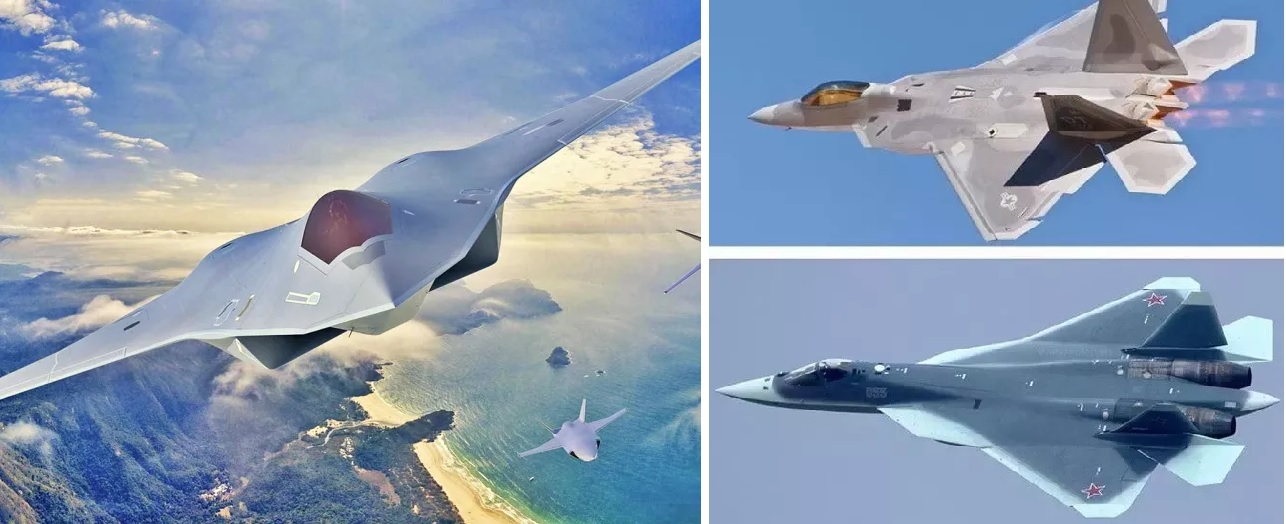 Key Differences Between 5th vs. 6th Generation Fighter Jets
Key Differences Between 5th vs. 6th Generation Fighter Jets
-
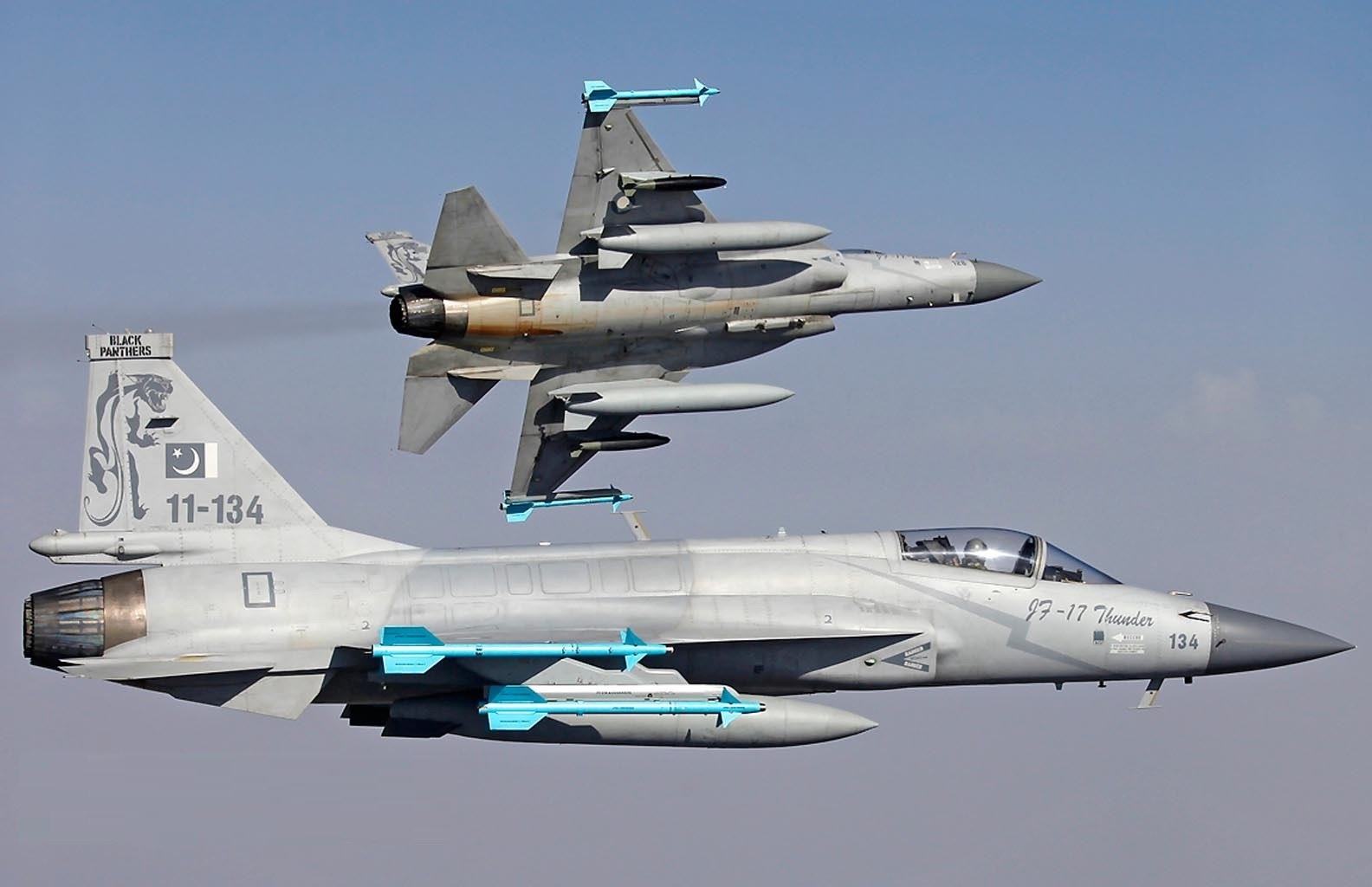 Pakistan Air Force to Unveil Stealth-Enhanced JF-17 Block 4 Fighter Jet by 2028
Pakistan Air Force to Unveil Stealth-Enhanced JF-17 Block 4 Fighter Jet by 2028
-
 India’s AMCA Engine Decision: Safran vs. Rolls-Royce Final Expected by 2025
India’s AMCA Engine Decision: Safran vs. Rolls-Royce Final Expected by 2025
-
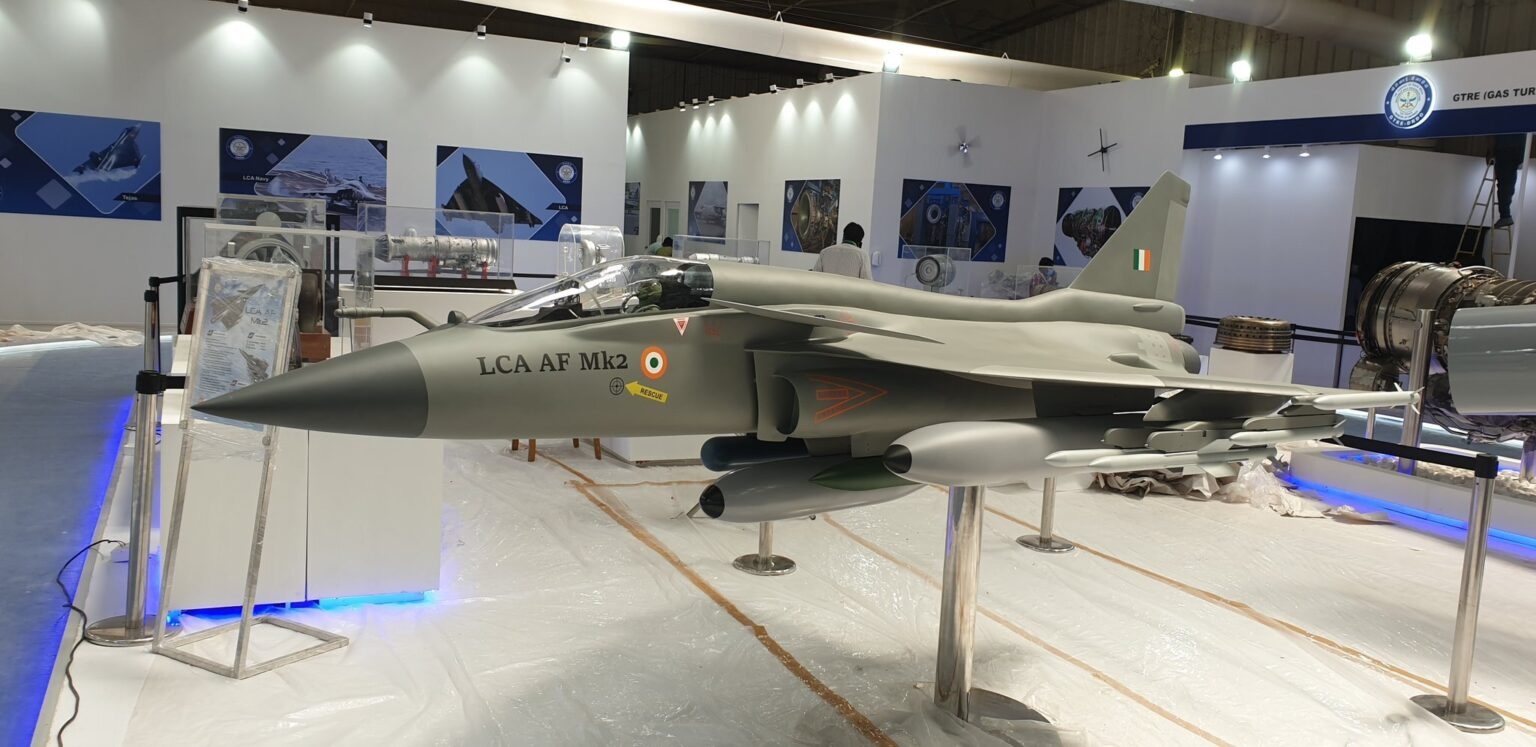 Tejas Mk2 Nears 2025 Rollout as HAL Ramps Up Final Assembly and System Integration
Tejas Mk2 Nears 2025 Rollout as HAL Ramps Up Final Assembly and System Integration
-
 Pakistan Announces 15% Increase in Defence Budget for 2024-25 Amid Economic Crisis
Pakistan Announces 15% Increase in Defence Budget for 2024-25 Amid Economic Crisis
-
 India's TEDBF Program Takes Shape First Flight by 2028: Aiming for Naval Supremacy with Advanced Stealth and Technology
India's TEDBF Program Takes Shape First Flight by 2028: Aiming for Naval Supremacy with Advanced Stealth and Technology
Top Trending in 4 Days
-
 Pakistan Army to Deploy Troops to Gaza by January 2026 Under Trump–Munir Deal, $500 Per Soldier
Pakistan Army to Deploy Troops to Gaza by January 2026 Under Trump–Munir Deal, $500 Per Soldier
-
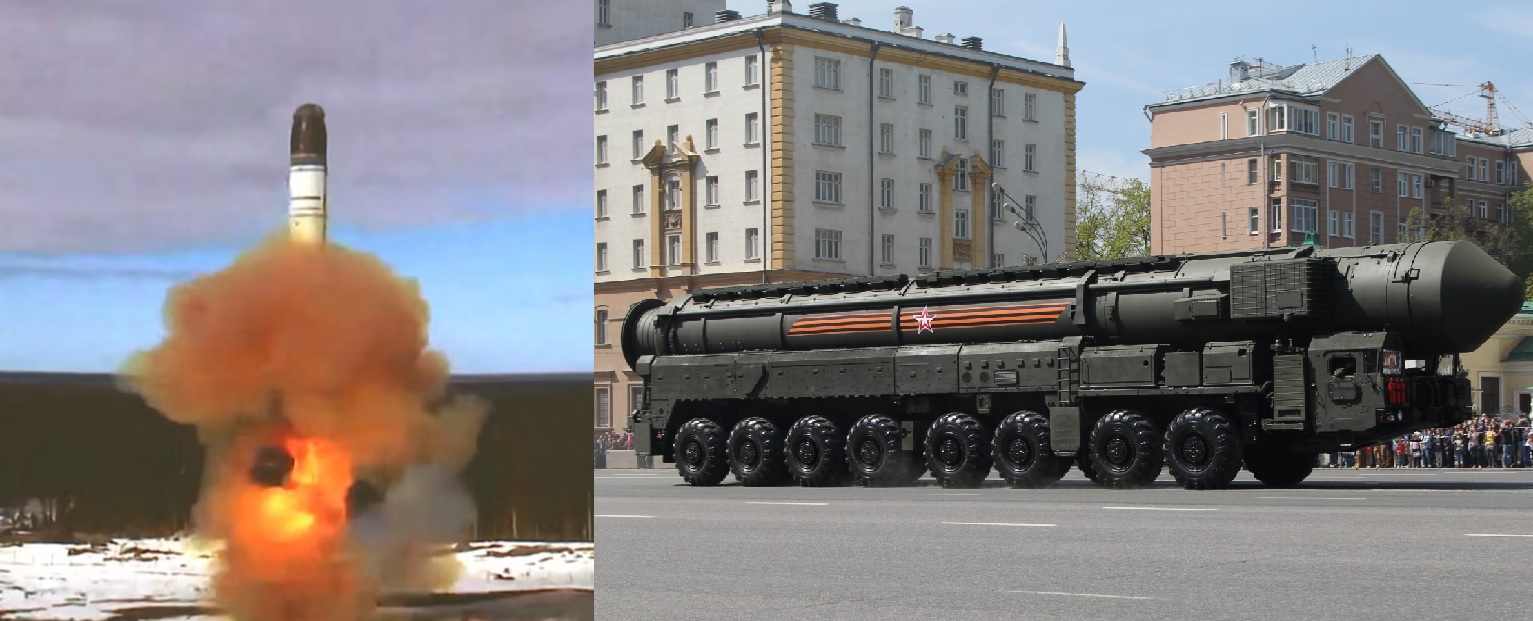 Russia Simulates Full-Scale Nuclear War in Siberia, Deploys Yars ICBMs on Combat Patrols
Russia Simulates Full-Scale Nuclear War in Siberia, Deploys Yars ICBMs on Combat Patrols
-
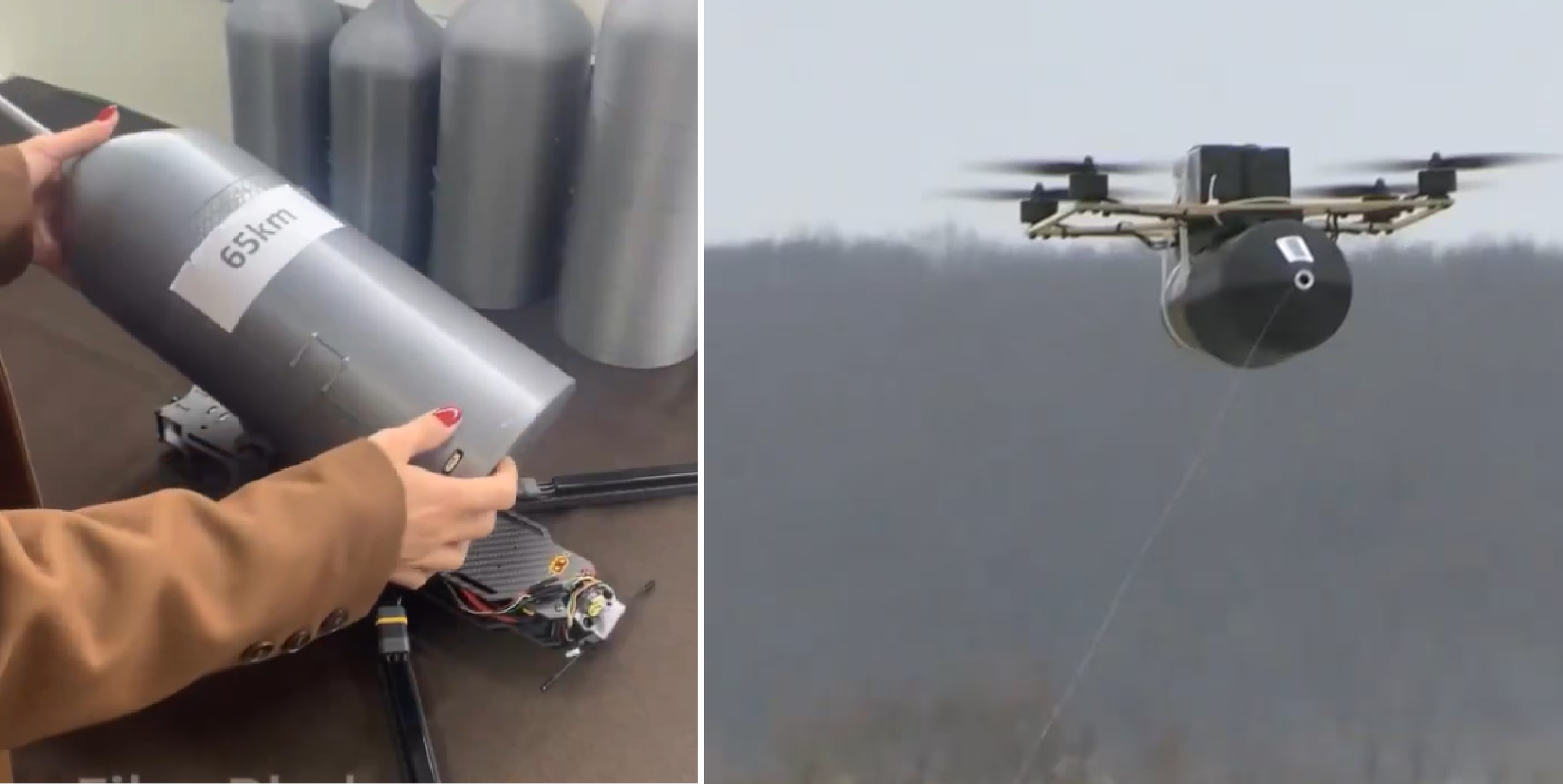 Russia Claims Test of 65-Kilometre Fiber-Optic FPV Drone Link
Russia Claims Test of 65-Kilometre Fiber-Optic FPV Drone Link
-
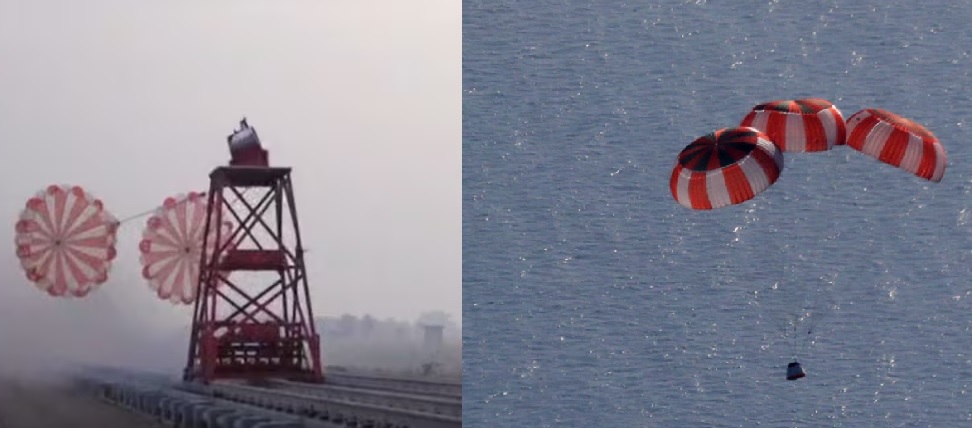 ISRO Successfully Qualifies Drogue Parachutes for Gaganyaan Crew Module
ISRO Successfully Qualifies Drogue Parachutes for Gaganyaan Crew Module
-
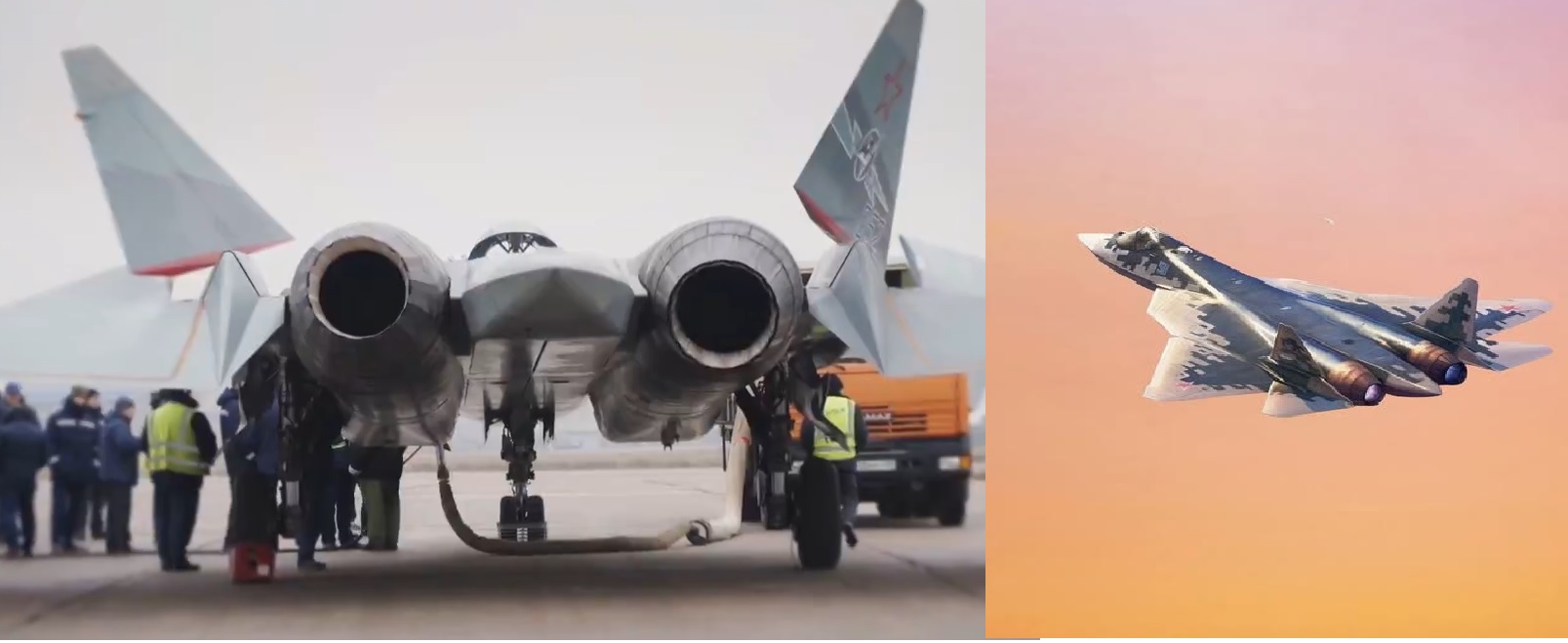 Russian Su-57 Conducts First Flight With Next-Generation Izdeliye-177 Engine
Russian Su-57 Conducts First Flight With Next-Generation Izdeliye-177 Engine
-
 Russian Strike on Mayaki Bridge Threatens Up to 60% of Ukraine’s Fuel Supply
Russian Strike on Mayaki Bridge Threatens Up to 60% of Ukraine’s Fuel Supply
-
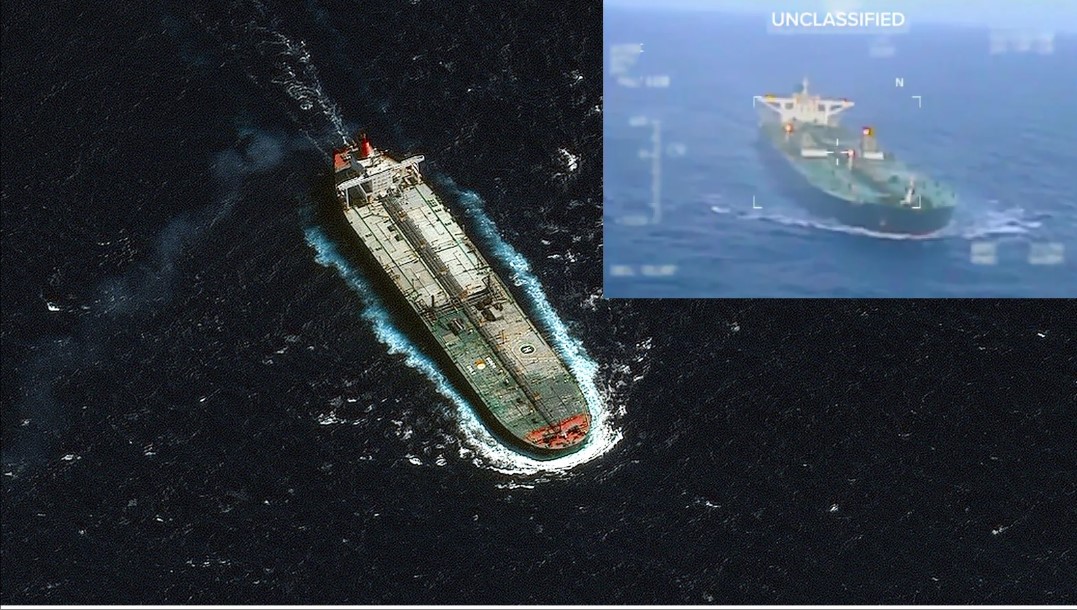 U.S. Seizes China-Linked Oil Tanker Carrying Venezuelan Crude in International Waters
U.S. Seizes China-Linked Oil Tanker Carrying Venezuelan Crude in International Waters
-
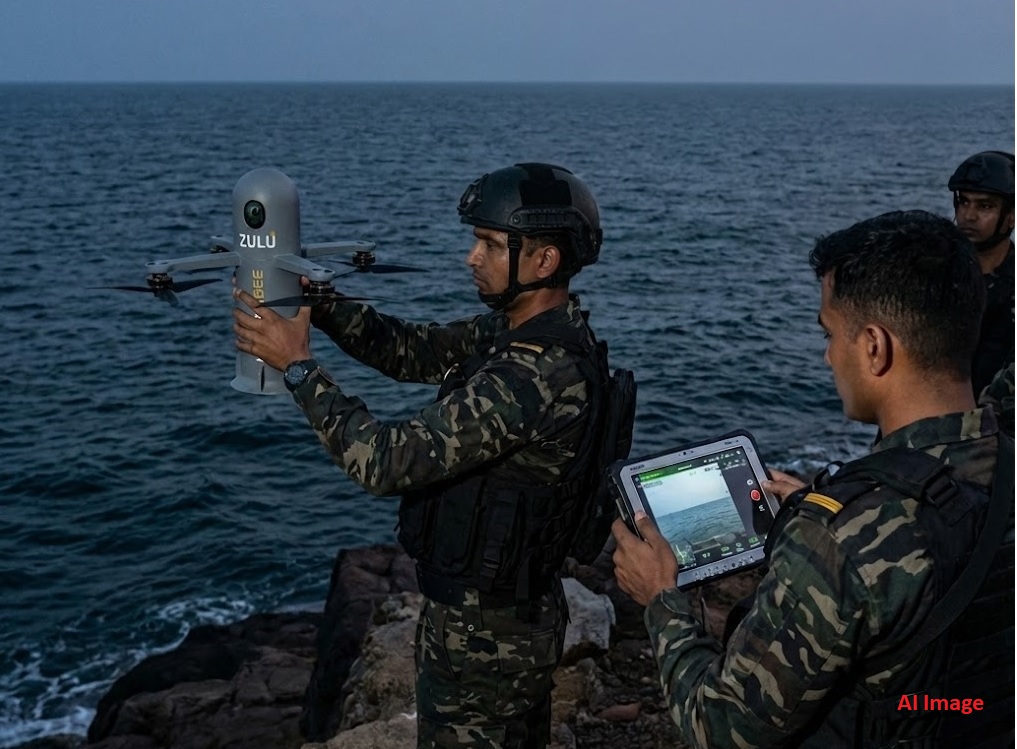 Indian Navy’s MARCOS Induct High-Tech ‘Hoverbee’ Kamikaze Drones for Stealth Operations
Indian Navy’s MARCOS Induct High-Tech ‘Hoverbee’ Kamikaze Drones for Stealth Operations
